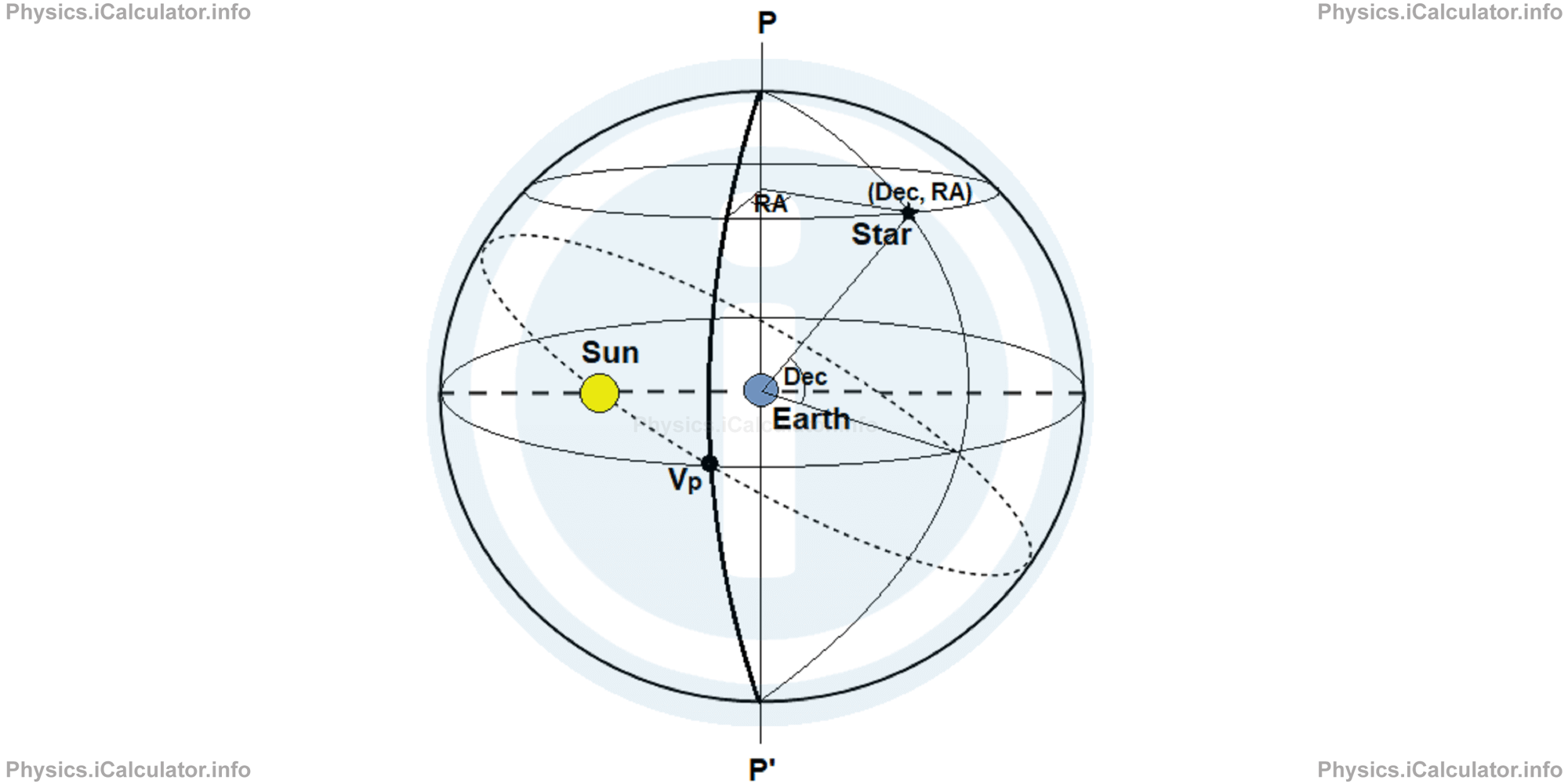Menu
Physics Lesson 22.8.2 - Equatorial Coordinates
Please provide a rating, it takes seconds and helps us to keep this resource free for all to use
Welcome to our Physics lesson on Equatorial Coordinates, this is the second lesson of our suite of physics lessons covering the topic of Orientation in the Sky and Constellations, you can find links to the other lessons within this tutorial and access additional physics learning resources below this lesson.
Equatorial Coordinates
The most used coordinates for representing the objects position in the celestial sphere are equatorial coordinates. These coordinates offer a big advantage over other types of coordinates; they are independent of the observer's location and the time of the observation. This means that only one set of coordinates is sufficient for each object, and the same coordinates can be used by observers in different locations and at different times.
The equatorial coordinate system is basically the projection onto the celestial sphere of the latitude and longitude coordinate system we use here on Earth. By direct analogy, lines of latitude become lines of declination (Dec; measured in degrees, arcminutes and arcseconds) and indicate how far north or south of the celestial equator (defined by projecting the Earth's equator onto the celestial sphere) a celestial body lies. Lines of longitude have their equivalent in lines of right ascension (RA), but unlike in geography, where longitude is measured in degrees, minutes and seconds east the Greenwich meridian, RA here is measured in hours, minutes and seconds east from where the celestial equator intersects the ecliptic (the vernal equinox or vernal point Vp).
In other words, RA represents the angle (expressed in units similar to clock ones) between the meridian plane passing through a given star - the coordinates of which we want to find - and the plane of the zero meridian passing in the direction of Vernal Equinox that acts as a reference meridian. Look at the figure.

Right ascension normally takes the values from 0 to 360°. However, the clock-type values are often preferred for right ascension because the Earth makes one revolution around itself in 24h, the celestial sphere completes one revolution in the same time as well. Therefore, right ascension is often expressed in hours (from 0 to 24 h) with values that increase from West to East.
Regardless of whether the Earth rotates around its own axis or around the the Sun, inclination and right ascension are two immutable values in all hours of the day and in all days of the year. This is because the change in distance due to the Earth revolution around the Sun is so small compared to the distance of stars, that it does not change anything in the position of stars on the celestial sphere. This does not occur when considering the celestial bodies of our solar system because their position in the celestial sphere changes a lot during the year due to orbital revolution of the Earth and planets movement around the the Sun.
Example 1
Express the RA angle in degrees if RA = 10 hours.
Solution 1
From theory, we know that a rotation by 360° of Earth around its axis corresponds to 24 h. Hence, we have for the required RA angle in degrees if RA(in hours) = 10 h
You have reached the end of Physics lesson 22.8.2 Equatorial Coordinates. There are 8 lessons in this physics tutorial covering Orientation in the Sky and Constellations, you can access all the lessons from this tutorial below.
More Orientation in the Sky and Constellations Lessons and Learning Resources
Whats next?
Enjoy the "Equatorial Coordinates" physics lesson? People who liked the "Orientation in the Sky and Constellations lesson found the following resources useful:
- Equatorial Coordinates Feedback. Helps other - Leave a rating for this equatorial coordinates (see below)
- Cosmology Physics tutorial: Orientation in the Sky and Constellations. Read the Orientation in the Sky and Constellations physics tutorial and build your physics knowledge of Cosmology
- Cosmology Revision Notes: Orientation in the Sky and Constellations. Print the notes so you can revise the key points covered in the physics tutorial for Orientation in the Sky and Constellations
- Cosmology Practice Questions: Orientation in the Sky and Constellations. Test and improve your knowledge of Orientation in the Sky and Constellations with example questins and answers
- Check your calculations for Cosmology questions with our excellent Cosmology calculators which contain full equations and calculations clearly displayed line by line. See the Cosmology Calculators by iCalculator™ below.
- Continuing learning cosmology - read our next physics tutorial: Expansion of the Universe
Help others Learning Physics just like you
Please provide a rating, it takes seconds and helps us to keep this resource free for all to use
We hope you found this Physics lesson "Orientation in the Sky and Constellations" useful. If you did it would be great if you could spare the time to rate this physics lesson (simply click on the number of stars that match your assessment of this physics learning aide) and/or share on social media, this helps us identify popular tutorials and calculators and expand our free learning resources to support our users around the world have free access to expand their knowledge of physics and other disciplines.